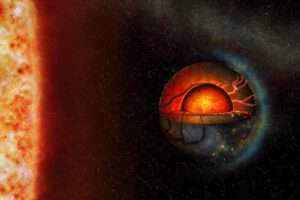In a groundbreaking discovery, scientists have recently detected a faint hum and gravitational wave background that provides further insights into the workings of our universe. This exciting development opens up new avenues of research and offers a deeper understanding of the cosmos. In this article, we will delve into the significance of this detection, its implications, and what it means for the field of astrophysics.

Scientists have detected a faint “hum” of gravitational waves in the universe. This discovery is a major breakthrough in our understanding of the universe, and it could have implications for our understanding of dark energy and dark matter.
Unveiling the Hum and Gravitational Wave Background
- What is the Hum?
The hum, as detected by scientists, refers to a low-frequency cosmic background signal that permeates throughout the universe. It is composed of a wide range of frequencies, producing a faint hum-like noise that scientists have been able to capture and analyze.
- Understanding Gravitational Wave Background
Gravitational waves, on the other hand, are ripples in the fabric of spacetime caused by the acceleration of massive objects. These waves were first predicted by Albert Einstein’s theory of general relativity. Gravitational wave background refers to the collection of all these waves present in the universe, acting as a sort of cosmic symphony.
The Significance of the Discovery
The detection of hum and gravitational wave background holds immense significance for the field of astrophysics and our understanding of the universe. Here are some key implications of this discovery:
- Probing the Early Universe
The hum and gravitational wave background provide valuable insights into the early stages of the universe. By studying these signals, scientists can gather information about the conditions that prevailed during the cosmic dawn, shedding light on the formation of galaxies, stars, and other cosmic structures.
- Confirming Inflationary Theory
The detection of the hum and gravitational wave background adds further support to the theory of cosmic inflation. According to this theory, the universe underwent a rapid expansion in its early stages. The hum and gravitational wave background help validate this concept and provide clues about the nature of inflation.
- Exploring Dark Matter and Dark Energy
The hum and gravitational wave background can help unravel the mysteries surrounding dark matter and dark energy. These elusive components constitute a significant portion of the universe but are still poorly understood. By analyzing the signals present in the background, scientists can gain insights into the nature and distribution of dark matter and dark energy.
- Advancing Gravitational Wave Astronomy
Gravitational wave detectors have revolutionized our ability to observe the universe. The detection of the gravitational wave background further enhances our capacity to study cosmic phenomena, such as black hole mergers, neutron star collisions, and other cataclysmic events. It opens up new avenues for gravitational wave astronomy and paves the way for future discoveries.
How was the hum and gravitational wave background detected?
The detection was made possible through advanced instruments and detectors, such as the Laser Interferometer Gravitational-Wave Observatory (LIGO) and the Cosmic Microwave Background (CMB) experiments. These instruments can pick up subtle signals from the universe and analyze them to reveal the hum and gravitational wave background.
Can the hum and gravitational wave background be heard?
The hum and gravitational wave background exist at extremely low frequencies, far beyond the range of human hearing. They are detected and analyzed using specialized scientific instruments and data processing techniques.
How does the detection of the hum and gravitational wave background contribute to our understanding of the universe?
The detection provides valuable information about the early universe, confirms theoretical models like inflation, helps explore dark matter and dark energy, and advances our capabilities in gravitational wave astronomy. It deepens our knowledge of the cosmos and offers new avenues for scientific exploration.
The recent detection of the hum and gravitational wave background marks a significant milestone in our understanding of the universe. By unraveling the cosmic hum and studying the intricate patterns of gravitational waves, scientists can glean insights into the origins of the cosmos, probe the mysteries of dark matter and dark energy, and push the boundaries of gravitational wave astronomy. This groundbreaking discovery sets the stage for further scientific advancements and brings us closer to unraveling the profound secrets of our vast universe. The discovery of the gravitational wave background is a major breakthrough in our understanding of the universe. It could have implications for our understanding of dark energy and dark matter, and it could also help us to understand the early history of the universe. This is an exciting time for science, and we can’t wait to see what other discoveries are made in the future.
